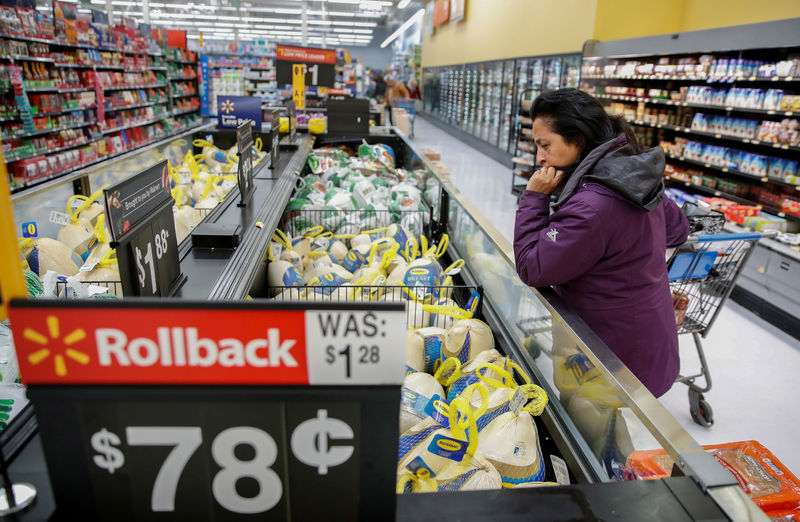WASHINGTON (Reuters) - U.S. consumer spending rose marginally in September while wages were unchanged, which could cast doubts on consumers' ability to continue driving the economy amid a deepening slump in business investment.
The Commerce Department said on Thursday consumer spending, which accounts for more than two-thirds of U.S. economic activity, gained 0.2% last month as households stepped up purchases of motor vehicles and spent more on healthcare.
Data for August was revised up to show consumer spending climbing 0.2% instead of the previously reported 0.1% rise. Economists polled by Reuters had forecast consumer spending would advance 0.2% last month.
The data was included in the gross domestic product report for the third quarter, which was published on Wednesday.
The government reported that growth in consumer spending slowed to a still-healthy 2.9% annualized rate last quarter after surging at a 4.6% pace in the second quarter, the fastest since the fourth quarter of 2017. That softened some of the blow on the economy from a deepening slump in business investment.
The economy grew at a 1.9% rate in the third quarter after expanding at a 2.0% pace in the April-June period.
Consumer spending is being powered by the lowest unemployment rate in nearly 50 years. There are, however, concerns that business investment, which has contracted for two straight quarters, could eventually spill over to the labor market and crimp consumer spending.
The Federal Reserve cut interest rates on Wednesday for the third time this year, but signaled a pause in the easing cycle, which started in July when it reduced borrowing costs for the first time since 2008. Fed Chair Jerome Powell said he expected the economy to continue on a moderate growth path, supported by "solid household spending and supportive financial conditions."
Inflation was tame in September. Consumer prices as measured by the personal consumption expenditures (PCE) price index were unchanged for a second straight month in September as the cost of energy goods and services dropped 1.3%.
In the 12 months through September, the PCE price index increased 1.3% after rising 1.4% in the 12 months through August.
Excluding the volatile food and energy components, the PCE price index was also unchanged last month after gaining 0.1% in August. That lowered the annual increase in the so-called core PCE price index to 1.7% in September from 1.8% in August.
The core PCE index is the Fed's preferred inflation measure and had undershot the U.S. central bank's 2% target this year.
When adjusted for inflation, consumer spending rose 0.2% in September, matching August's gain.

Personal income rose 0.3% in September, driven by an increase in farm proprietors' income, likely related to payments to farmers caught in the U.S.-China trade war. Income jumped 0.5% in the prior month. Wages were unchanged after surging 0.6% in August. With income growth outpacing spending, savings rose to $1.38 trillion from $1.35 trillion in August.